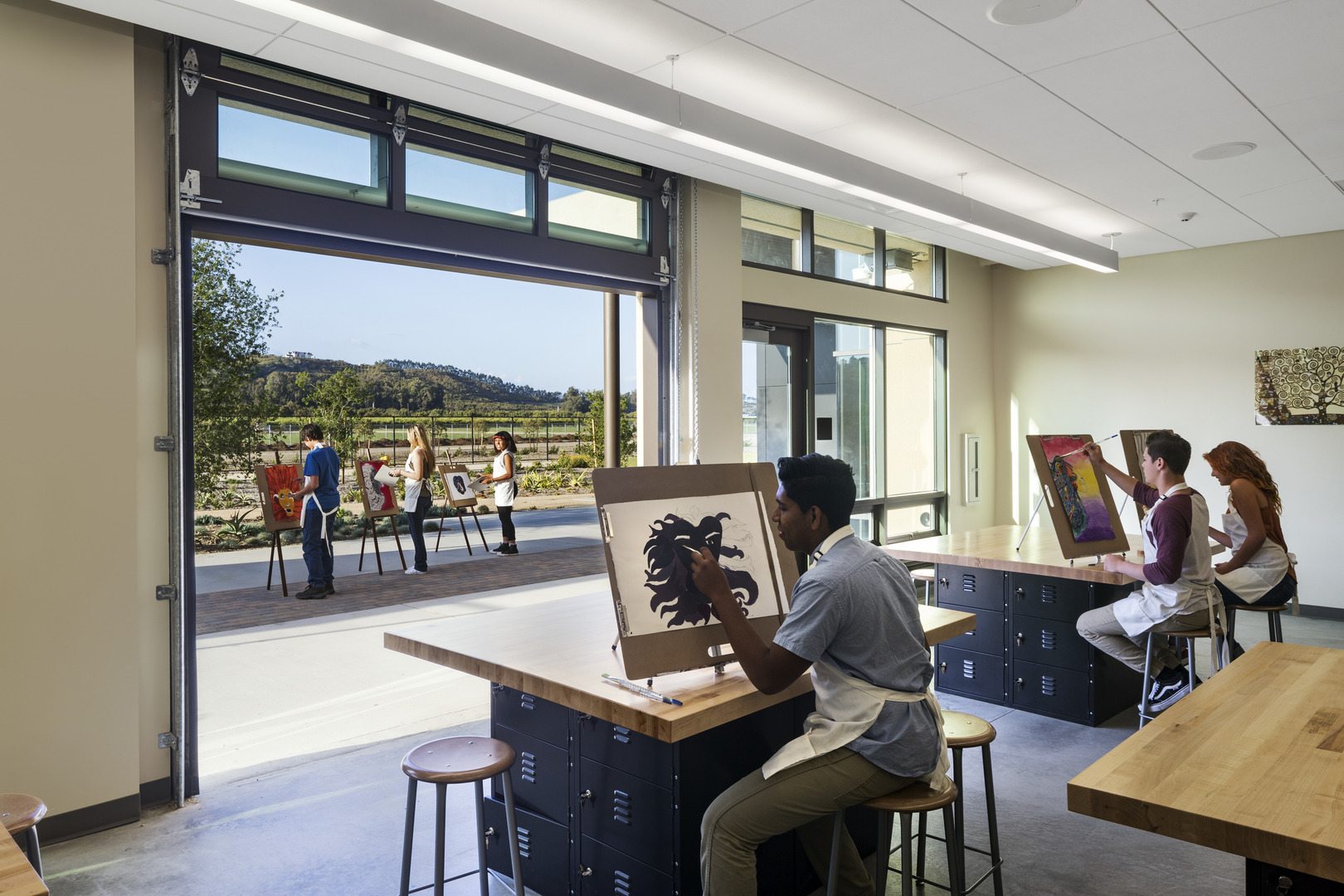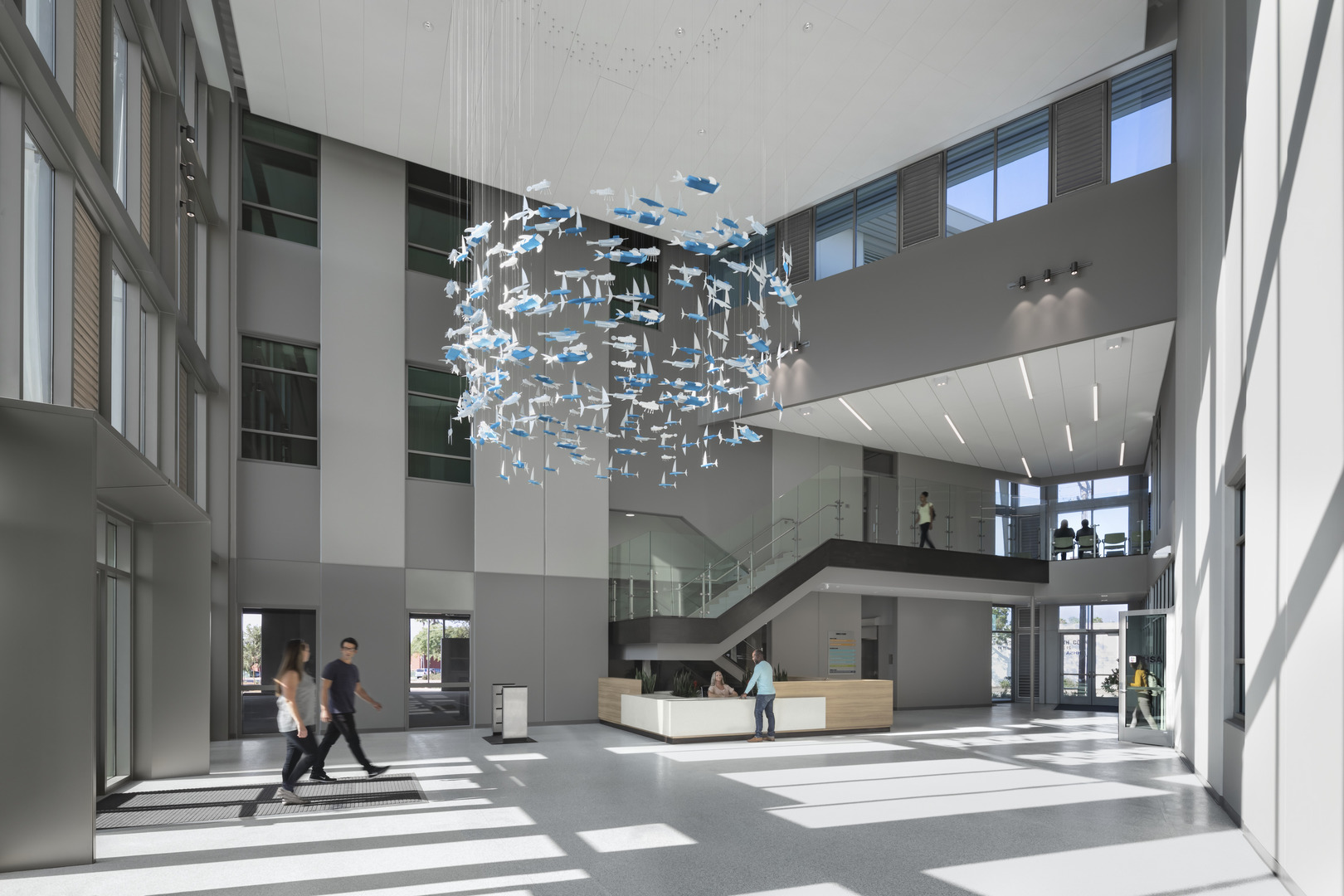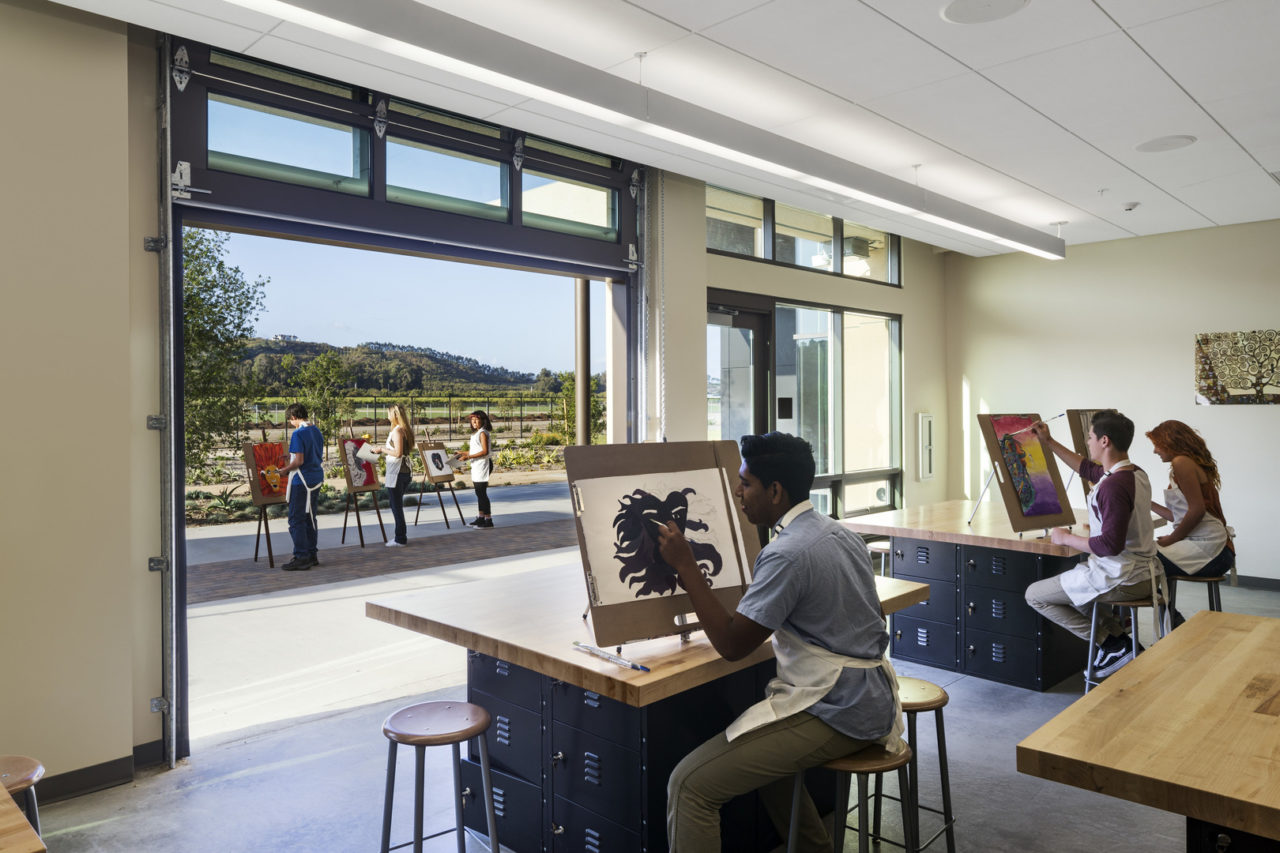Circadian rhythms keep us happy and healthy. They play a major role in sleep, cognitive performance, and the immune system. However, circadian rhythms are also easy to disrupt. Even minor changes in your routine and environment can throw these rhythms off and lead to health complications.
How do you prevent this from happening? At HMC Architects, we use natural lighting for health and well-being to make our buildings look more aesthetically pleasing and ensure that visitors maintain a normal circadian rhythm.
What Are Circadian Rhythms and How Does Light Impact Them?
Circadian rhythms are biological, behavioral, and mental processes that follow a 24-hour cycle. For example, most healthy adults sleep for seven to nine hours every night and this sleep schedule is usually very predictable.
Circadian rhythms are controlled by the suprachiasmatic nucleus (SCN)—a small region in the front of the brain located just above the optic nerves. The SCN works like an alarm clock for the body. It tells the pineal gland what hormones to produce throughout the day, and controls your:
- Sleep and wake cycles
- Productivity and alertness
- Body temperature
- Digestive system
How Lighting Affects Circadian Rhythms
Although circadian rhythms are controlled by the SCN and pineal gland, environmental factors have a major impact on them. When it’s dark, your eyes detect this and send this information to the brain. In response, the SCN then tells the pineal gland to produce more melatonin, a hormone that makes you feel tired. This hormone usually peaks at night, and then sharply decreases after you wake in the morning.
Lack of light is a primary cue that signals sleep. If you are exposed to bright, artificial lighting at night, the SCN won’t signal the pineal gland to produce as much melatonin, so you’ll have a difficult time falling asleep. Conversely, if you aren’t exposed to enough bright light during the day, you may feel sluggish or sleepy because you have too much melatonin in your system.
Disruptions in normal circadian rhythms can lead to a myriad of problems, including sleep disorders, obesity, diabetes, depression, seasonal affective disorder (SAD), cardiovascular disease, and cancer.
Natural Light Helps Regulate Circadian Rhythms
Natural light has a significant impact on circadian rhythms because it’s both full-spectrum (containing all of the colors you can see with the naked eye) and dynamic. When light is dynamic, it changes in color and intensity throughout the day.
Natural light is bright blue, especially in the morning and on clear sunny days. As the sun sets, the light becomes softer and redder. This slow change in color and light intensity throughout the day sends visual signals to the brain that regulate the circadian rhythm.
It’s important to design thoughtful lighting that benefits the health and well-being of your building’s occupants. An effective lighting system designed around natural circadian rhythms helps occupants maintain a normal sleep schedule and feel much happier and healthier.
 The Benefits of Using Deliberate Lighting to Improve Circadian Rhythms
The Benefits of Using Deliberate Lighting to Improve Circadian Rhythms
The main advantage of designing lighting for health and well-being is that it helps people get a better night’s sleep. This might seem like a small benefit, but it also leads to additional long-term benefits, such as:
- Higher productivity
- Improved memory and cognitive function
- Healthier immune systems
- Better metabolic function
- Improved mood
Lighting design has universal applications in a wide range of industries and institutions. Healthcare, education, civic and office buildings can all make use of lighting to improve circadian rhythms.
For example, when we designed the County of San Diego Health and Human Services Agency Building, we maximized daylight using large windows in each wing. We did this because natural light in office spaces leads to higher worker productivity and increases employee satisfaction.
In a collaboration of Delos and Mayo Clinic, the Well Living Lab is conducting innovative research to experiment the perfect workspace. One of their studies shows that when employees had no access to natural daylight and were unable to look out a window, their moods at work were negatively affected. Conversely, being able to see outside improved mood. Also, employees reported that when the office area had blue-enriched electric lighting, they slept better at night.
We used a similar technique to improve the circadian rhythms of patients and staff at Henderson Hospital in Nevada. Patient rooms are oriented to receive an ample amount of natural light during the day. At night, privacy curtains and light dimmers keep these rooms dark, helping patients rest more comfortably. This also bolsters the immune system, leading to better health outcomes and faster healing.
Over the past 25 years, numerous studies have documented the diverse effects of daylight on physiological and psychological patient health and well-being. Multiple studies (from 2012, 2013, and 2016) show a significant reduction in length of stay (LOS) in hospital for patients with more access to natural light compared to those with limited exposure to daylighting. A recent study on circadian stimulus (CS) in a healthcare setting shows a minimum of 40 percent window-wall ratio is necessary to provide sufficient circadian stimulus for a patient lying down, while a minimum 30 percent ratio is required for a patient sitting up. Bigger is not always better – a window-wall ratio of more than 60 percent has been found to provide little, if any, added benefit for circadian stimulus.
In educational facilities, natural light optimizes circadian rhythms to help students learn. At Rancho Campana High School in California, some classrooms feature large, roll-up doors that open easily to let in more light.
One study of 21,000 U.S. elementary students showed that student test results have improved in math (20 percent) and reading (26 percent) in classrooms with maximum daylight compared to those under minimum daylight. Also, classrooms with maximum window areas were significantly correlated with students’ reading and math performance. According to a recent interview article on the effect of daylighting on student health, the study shows benefits of natural light on student physical health by vitamin D generation, calcium absorption and circadian regulation. It also shows evidence that daylight enhances mental performance, decreases depression, and improves sleep. As a result, studies have shown that when students maintain a healthy sleep schedule, they concentrate better, get higher test scores, and have fewer absences and behavioral problems.
If you want to use lighting to improve the health and well-being of the people who visit your building, you’ll need to incorporate as much natural light into a space as possible. Here’s how:
 How to Design Lighting for Health and Well-being
How to Design Lighting for Health and Well-being
To promote a healthy sleep-wake schedule, architects strive to direct as much natural light into spaces as possible. To do this, you can install skylights and floor-to-ceiling windows, especially in large community areas such as the front lobby, cafeteria, and lounge. Architects can also help you site the building so that these community spaces get the greatest amount of direct sunlight when the highest number of visitors enter the space.
However, not every building can be designed with floor-to-ceiling windows and skylights. Budget constraints, privacy considerations, and other factors might make it impossible to direct enough natural light into the building. In such cases, you’ll have to use artificial lighting instead.
Artificial lighting isn’t as effective as natural lighting for health and well-being because it isn’t always dynamic or full-spectrum. You can, however, mimic the look of natural lighting by installing LED lights that emit light in the same spectrum as daylight. You can also install a lighting system that automatically dims and changes color over time. In this way, occupants can receive the benefits of natural light.
Regardless of whether you use natural light or artificial lighting, experienced architects can help you find and install the perfect system for your building layout and your occupants’ needs. At HMC Architects, we believe in the power of natural lighting and incorporate as much of it as possible in all of our designs. By prioritizing natural lighting or artificial alternatives, you’ll maximize these potential health benefits.
To learn more about designing lighting for health and well-being, contact HMC Architects today. Our architecture firm specializes in daylighting, which improves circadian rhythms and fosters worker productivity, faster patient recovery times, and student learning.



